直接贴代码:
import tensorflow as tf
import numpy as np
import matplotlib.pyplot as plt
plt.rcParams["figure.figsize"] = (14,8)
# 生成随机数
n_observations = 100
xs = np.linspace(-3,3,n_observations)
ys = np.sin(xs) + np.random.uniform(-0.5, 0.5, n_observations)
plt.scatter(xs, ys)
plt.show()
# 定义容器,放入X和Y
X = tf.placeholder(tf.float32, name="X")
Y = tf.placeholder(tf.float32, name="Y")
# 定义权重和偏置,对应与一次线性函数y = wx + b
w = tf.Variable(tf.random_normal([1]), name="weight")
b = tf.Variable(tf.random_normal([1]), name="bias")
# 进行计算预测Y_Pre
Y_Pre = tf.add(tf.multiply(X,w), b)
# 计算损失的函数值,就是平方差
loss = tf.square(Y - Y_Pre, name="loss")
# 初始化
learning_rate = 0.01
optimizer = tf.train.GradientDescentOptimizer(learning_rate).minimize(loss)
# 给出迭代次数,并且加入 Session执行
n_samples = xs.shape[0]
init = tf.global_variables_initializer()
with tf.Session() as sess:
# 首先初始化所有的变量
sess.run(init)
# 写入日记,使用tensorboard观察
writer = tf.summary.FileWriter('./graphs', sess.graph)
# 训练模型
for i in range(50):
total_loss = 0
for x, y in zip(xs, ys):
# 通过feed_dic把数据灌进去
_, l = sess.run([optimizer, loss], feed_dict={X: x, Y:y})
total_loss += l
if i%5 ==0:
print('Epoch {0}: {1}'.format(i, total_loss/n_samples))
# 关闭writer
writer.close()
w, b = sess.run([w, b])
print(w,b)
print("W:"+str(w[0]))
print("b:"+str(b[0]))
plt.plot(xs,ys,"bo",label="Real data")
plt.plot(xs,xs*w+b,'r',label="Predicted data")
plt.legend()
plt.show()
然后打开tensorboard查看日志文件:








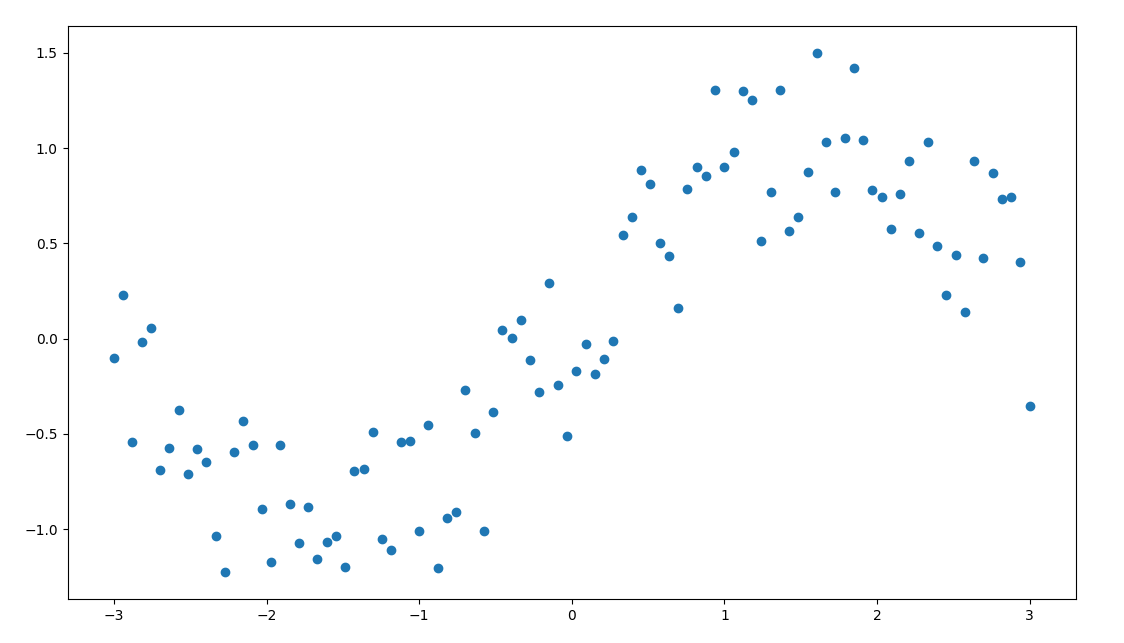
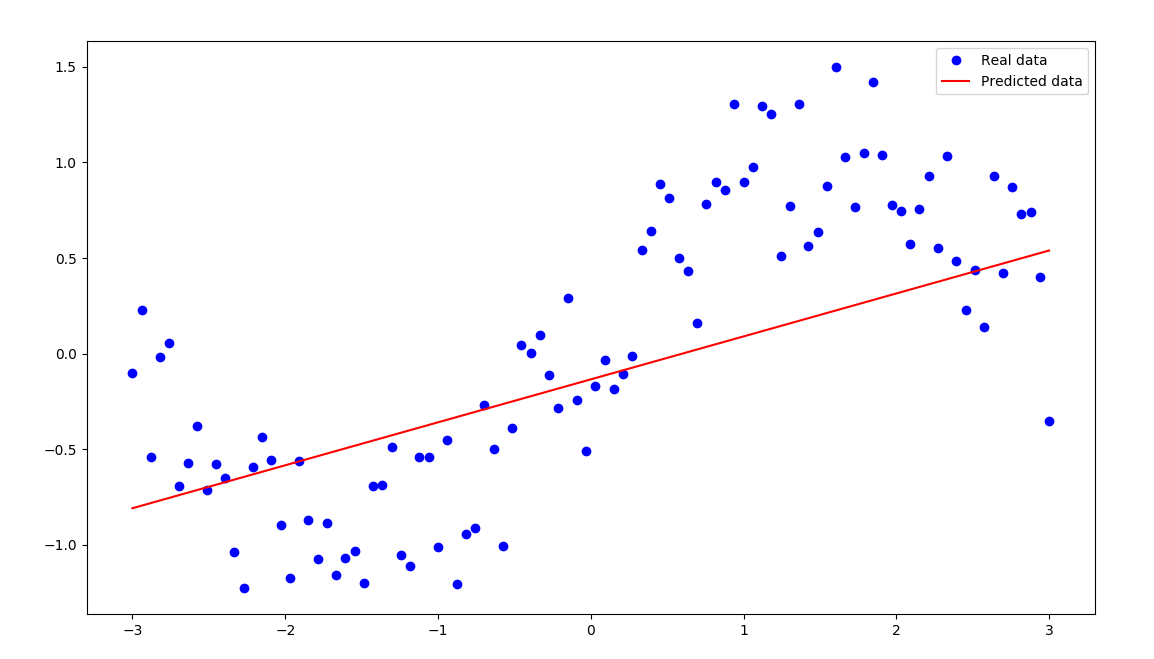

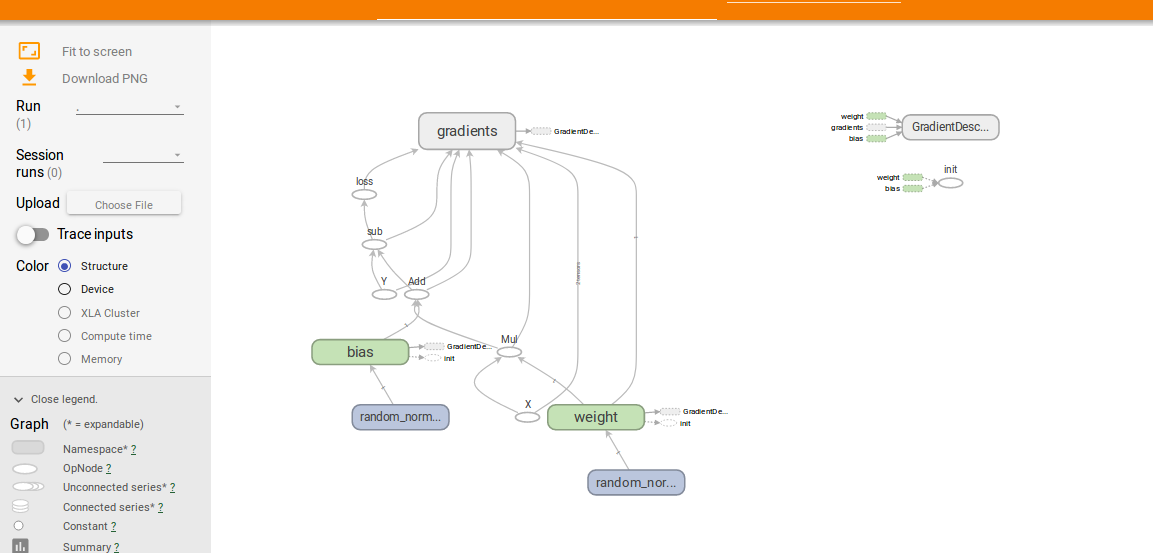
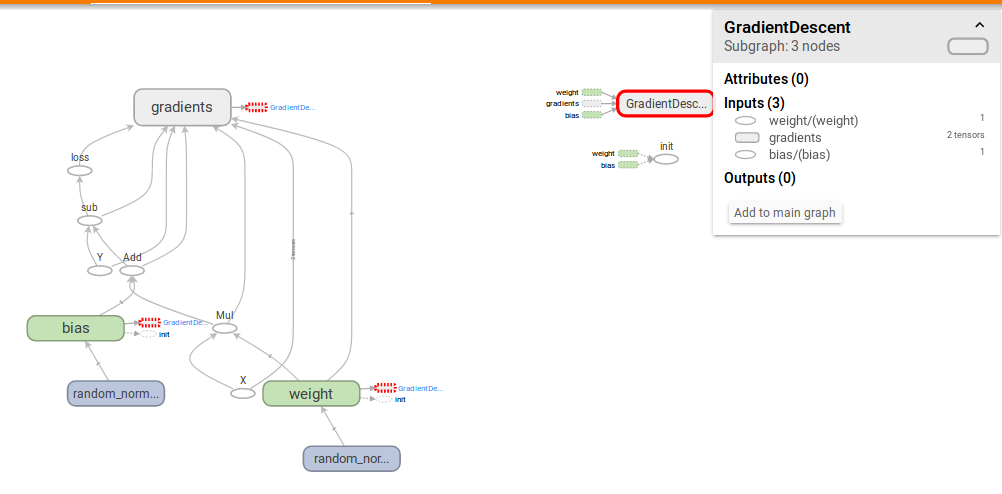
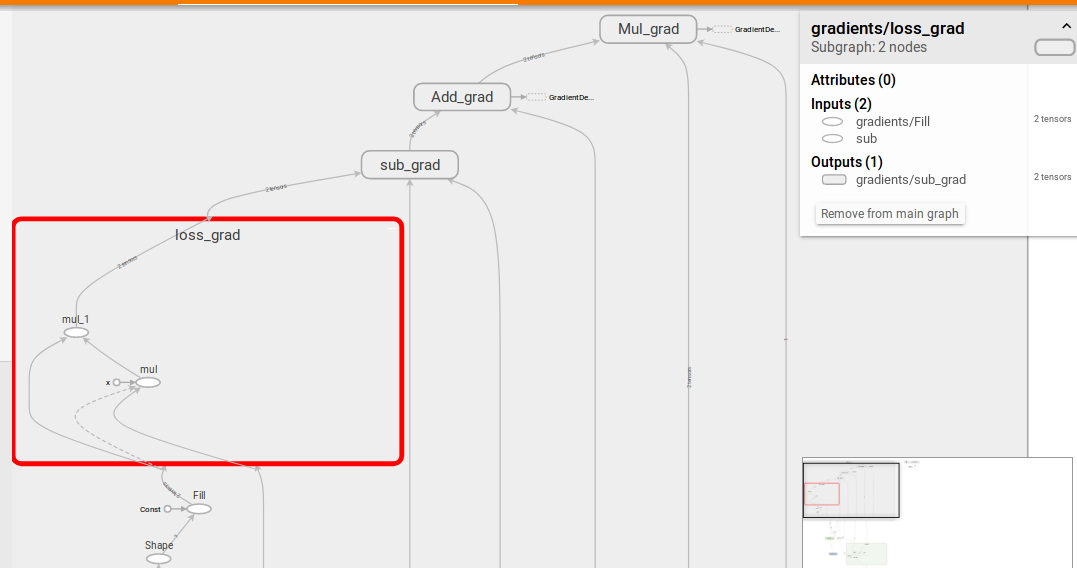














 1974
1974

 被折叠的 条评论
为什么被折叠?
被折叠的 条评论
为什么被折叠?








